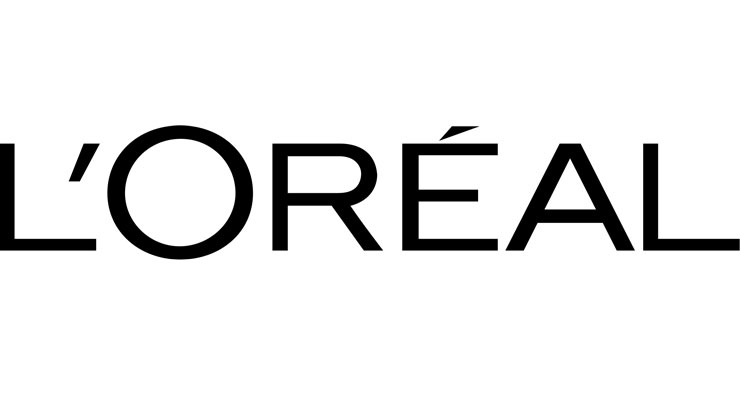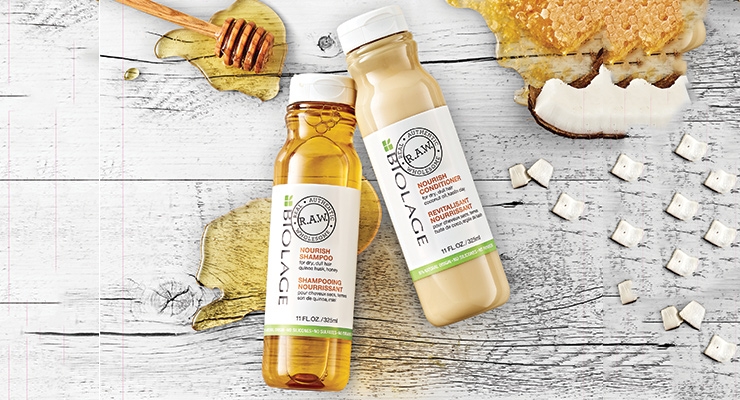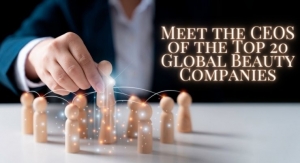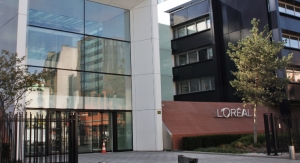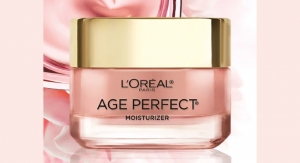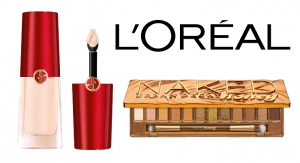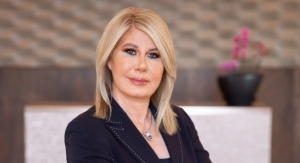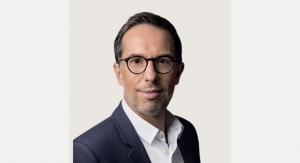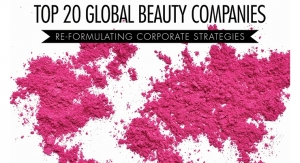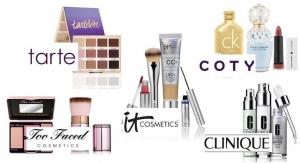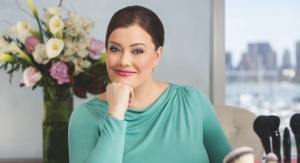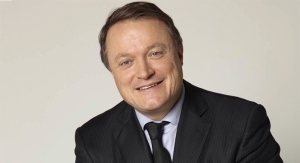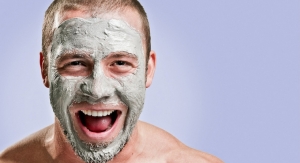By Jamie Matusow with Joanna Cosgrove, Editor-in-Chief with Contributing Editor11.01.17
Update: L’Oréal ranks at #1 on our latest report Top 20 Global Beauty Companies 2021.
France
www.loreal.com
Beauty Sales:
$27.2 billion
Key Personnel:
Jean-Paul Agon, chairman and CEO; Laurent Attal, executive vice president, research and innovation; Nicolas Hieronimus, deputy chief executive officer; Frédéric Rozé, executive vice president, the Americas Zone; Tim Coolican, brand president L’Oréal Paris; Brigitte Liberman, president, active cosmetics division; Alexis Perakis-Valat, president, consumer products division; Alexandre Popoff, executive vice president, Eastern Europe and Africa, Middle East; David Greenberg, group president professional products division; Nathalie Roos, president, professional products division; Ikdeep Singh, brand president Maybelline, Garnier and Essie, consumer products division.
Major Products/Brands:
Hair care, skin care, sun care, color cosmetics and fragrances sold under 32 brand names in mass, professional, active and prestige channels, including Garnier, L’Oréal Paris, Maybelline, SoftSheen-Carson, IT Cosmetics, NYX, Essie, Kiehl’s, Urban Decay, Diesel, Dark & Lovely, L’Oréal Professional, Kerastase, Redken, Matrix, Lancôme, Biotherm, Giorgio Armani, Ralph Lauren, Viktor & Rolf, YSL Beauté, Vichy, LaRoche-Posay, SkinCeuticals, Sanoflore, CeraVe, AcneFree, Ambi; and The Body Shop (now sold to Natura).
New Products:
Lancôme’s Le Teint Particulier, Maybelline City Mini Palette, Garnier Whole Blends, IT Cosmetics Je Ne Sais Quoi Hydrating Color Awakening Lip Treatment, Urban Decay All-Nighter, YSL Black Opium Eau de Parfum, L’Oréal Pure Clay Detox & Brighten Cleanser, Biolage R.A.W. range.
Comments:
In a move indicative of the times, with mergers of large and small beauty brands, 105-year-old L’Oréal capped off a successful 2016, by boosting its Luxe portfolio with the acquisition of IT Cosmetics—the rapidly growing firm founded by entrepreneur Jamie Kern Lima—for $1.2 billion. Covering all its bases, the world’s largest beauty company also put in progress a deal with Valeant to acquire mass skincare brands CeraVe, AcneFree and Ambi for a cash purchase price of $1.3 billion. The deal was finalized early in 2017, and nearly doubled the size of L’Oréal’s Active Cosmetics Division in the U.S.
These types of strategic decisions worked to strengthen the brand’s global position, and drove 2016 annual sales to $27.2 billion, once again making L’Oreal the top performing global beauty company on Beauty Packaging’s annual Top 20 list. Sales were up +4.7% on a like-for-like basis and all divisions recorded sales growth. Consumer Products led, reaching nearly $12.6 billion, a 3% gain, like-for-like. L’Oreal Luxe showed the strongest growth (+6.9%), and came in at $8 billion. Active Cosmetics achieved a 5.7% growth, adding up to just under $2 billion. The Professional Products division, up 1.8%, recorded sales of $3.6 billion. The Body Shop brought in an additional $970 million, a 6% decline in sales in the fourth quarter of 2016, which led to its sale to Brazil-based Natura in 2017.
Sales by Division
In a market that L’Oreal describes as “gradually improving,” the Professional Products Division posted a “contrasted” year, with good growth in Europe, Africa, Middle East and Latin America, but a mixed performance in North America. India, Russia and the UK led in growth. Hair color was the top performer, boosted by Shades EQ by Redken, SoColor Beauty and Color Sync by Matrix, and Inoa and Dia by L’Oréal Professionnel. In skincare, the Decléor brand recorded double-digit growth.
The Consumer Products Division credited success to the continued popularity of NYX Professional Makeup, as well as Maybelline, L’Oréal Paris and Essie. In skincare, Micellar Cleansing Waters by Garnier and Pure Clay Masks; and Magic Retouch in hair color for L’Oréal Paris proved to be winners. The Division performed well in North America, where it “significantly strengthened its leadership,” according to L’Oréal.
L’Oréal Luxe outperformed its market and was further strengthened by the acquisition of new brands IT Cosmetics and Atelier Cologne. Yves Saint Laurent achieved “an exceptional year,” with sales breaking the 1-billion-euro mark, thanks to makeup and fragrances, especially with Black Opium and the new women’s perfume Mon Paris.
Giorgio Armani had a very good year, driven by makeup and the success of the men’s fragrance Code Profumo. Urban Decay, remained strong, launching Vice Lipstick worldwide. Sales of Kiehl’s products rose. Lancôme posted another year of growth, with results attributed to Absolu Rouge, Énergie de Vie skincare for Millennials and La Vie Est Belle, No. 1 in Europe and among the top five women’s fragrances in the U.S.
The Active Cosmetics Division ended the year on a high note, increasing its share of the worldwide market. La Roche-Posay is posting its seventh consecutive year of double-digit growth, with a strong performance. Vichy is rolling out Slow Âge, “an innovative facial skincare line” stemming from advances made by L’Oréal Research in the exposome field.
Geographic Zones
As for the geographic zones, Jean-Paul Agon, chairman and CEO, L’Oréal, said the Group “grew sales and increased its lead in North America, and further accentuated its leadership in Europe, outperforming the market despite the difficult situation in France. Growth in the New Markets has remained solid.” New Markets led with the highest percentage growth, and sales of $10.3 billion; followed by Western Europe with $8.4 billion; and North America at $7.5 billion.
A Focus on Technology and Startups
Bent on pioneering advances in digital technology and harnessing it to conquer new markets and attract new consumers, L’Oréal pursued initiatives from naming a multitude of social media influencers to developing SPF-level indicating skin patches to partnering with tech startups and creating custom-made makeup.
Late in 2016, Lancôme launched Le Teint Particulier Custom Made Makeup, which it called “a breakthrough technology” that detects individual skin tones to deliver a uniquely-blended, custom foundation perfectly matched to an individual’s complexion. A Lancôme beauty advisor scans a client’s facial skin tone, and processes the data through a new, state-of-the-art algorithm that measures the tone. The personalized formula is then blended right at the counter and the customer’s Complexion ID is printed on the bottle for easy reference.
Earlier this year, L’Oréal announced a strategic investment and partnership with Founders Factory as part of a yearly incubator program.
2017 Highlights
At the beginning of 2017, L’Oréal celebrated its 20-year anniversary in China, originally entering the country with a dream of “putting a lipstick in the hands of every Chinese woman,” and later envisioning that China would become the No.1 sales contributor for the Group.
In April, L’Oréal re-emphasized its sustainability efforts to reduce its environmental footprint and to fight climate change. By 2020, they have committed to improve the environmental or social profile of 100% of its new or renovated products.
This commitment affects all L’Oréal brands and 82% of the products launched in 2016 (74% in 2015) already show such an improvement. Some of the new products launched in 2016 demonstrate levels of biodegradability exceeding 98%, such as the new Biolage R.A.W. range, and Garnier’s Ultra Doux 5 Plants shampoo.
In June, following speculation on the future of The Body Shop, L’Oréal announced a firm offer from Natura Cosméticos SA for its acquisition. The transaction of The Body Shop was valued at 1 billion euros and recently closed.
Looking Ahead
At press time, L’Oréal said it expects to post a record profit margin in 2017, backed by strong second-quarter and first-half results that were driven by the company’s Luxe Division and emerging markets. Sales in the three months ended June 30, which deconsolidated The Body Shop business—reached $7.5 billion euros, up 3.5% in reported terms and 4.3% on a like-for-like basis.
On a constant basis, the Active Cosmetics Division’s sales rose by 6.7%; the Consumer Products Division’s by 2.4%, and the Professional Products Division’s by 0.3%. Sales in the New Markets increased 6.9%, followed by Western Europe (3.1%), and North America (2.4%).
France
www.loreal.com
Beauty Sales:
$27.2 billion
Key Personnel:
Jean-Paul Agon, chairman and CEO; Laurent Attal, executive vice president, research and innovation; Nicolas Hieronimus, deputy chief executive officer; Frédéric Rozé, executive vice president, the Americas Zone; Tim Coolican, brand president L’Oréal Paris; Brigitte Liberman, president, active cosmetics division; Alexis Perakis-Valat, president, consumer products division; Alexandre Popoff, executive vice president, Eastern Europe and Africa, Middle East; David Greenberg, group president professional products division; Nathalie Roos, president, professional products division; Ikdeep Singh, brand president Maybelline, Garnier and Essie, consumer products division.
Major Products/Brands:
Hair care, skin care, sun care, color cosmetics and fragrances sold under 32 brand names in mass, professional, active and prestige channels, including Garnier, L’Oréal Paris, Maybelline, SoftSheen-Carson, IT Cosmetics, NYX, Essie, Kiehl’s, Urban Decay, Diesel, Dark & Lovely, L’Oréal Professional, Kerastase, Redken, Matrix, Lancôme, Biotherm, Giorgio Armani, Ralph Lauren, Viktor & Rolf, YSL Beauté, Vichy, LaRoche-Posay, SkinCeuticals, Sanoflore, CeraVe, AcneFree, Ambi; and The Body Shop (now sold to Natura).
New Products:
Lancôme’s Le Teint Particulier, Maybelline City Mini Palette, Garnier Whole Blends, IT Cosmetics Je Ne Sais Quoi Hydrating Color Awakening Lip Treatment, Urban Decay All-Nighter, YSL Black Opium Eau de Parfum, L’Oréal Pure Clay Detox & Brighten Cleanser, Biolage R.A.W. range.
Comments:
In a move indicative of the times, with mergers of large and small beauty brands, 105-year-old L’Oréal capped off a successful 2016, by boosting its Luxe portfolio with the acquisition of IT Cosmetics—the rapidly growing firm founded by entrepreneur Jamie Kern Lima—for $1.2 billion. Covering all its bases, the world’s largest beauty company also put in progress a deal with Valeant to acquire mass skincare brands CeraVe, AcneFree and Ambi for a cash purchase price of $1.3 billion. The deal was finalized early in 2017, and nearly doubled the size of L’Oréal’s Active Cosmetics Division in the U.S.
These types of strategic decisions worked to strengthen the brand’s global position, and drove 2016 annual sales to $27.2 billion, once again making L’Oreal the top performing global beauty company on Beauty Packaging’s annual Top 20 list. Sales were up +4.7% on a like-for-like basis and all divisions recorded sales growth. Consumer Products led, reaching nearly $12.6 billion, a 3% gain, like-for-like. L’Oreal Luxe showed the strongest growth (+6.9%), and came in at $8 billion. Active Cosmetics achieved a 5.7% growth, adding up to just under $2 billion. The Professional Products division, up 1.8%, recorded sales of $3.6 billion. The Body Shop brought in an additional $970 million, a 6% decline in sales in the fourth quarter of 2016, which led to its sale to Brazil-based Natura in 2017.
Sales by Division
In a market that L’Oreal describes as “gradually improving,” the Professional Products Division posted a “contrasted” year, with good growth in Europe, Africa, Middle East and Latin America, but a mixed performance in North America. India, Russia and the UK led in growth. Hair color was the top performer, boosted by Shades EQ by Redken, SoColor Beauty and Color Sync by Matrix, and Inoa and Dia by L’Oréal Professionnel. In skincare, the Decléor brand recorded double-digit growth.
The Consumer Products Division credited success to the continued popularity of NYX Professional Makeup, as well as Maybelline, L’Oréal Paris and Essie. In skincare, Micellar Cleansing Waters by Garnier and Pure Clay Masks; and Magic Retouch in hair color for L’Oréal Paris proved to be winners. The Division performed well in North America, where it “significantly strengthened its leadership,” according to L’Oréal.
L’Oréal Luxe outperformed its market and was further strengthened by the acquisition of new brands IT Cosmetics and Atelier Cologne. Yves Saint Laurent achieved “an exceptional year,” with sales breaking the 1-billion-euro mark, thanks to makeup and fragrances, especially with Black Opium and the new women’s perfume Mon Paris.
Giorgio Armani had a very good year, driven by makeup and the success of the men’s fragrance Code Profumo. Urban Decay, remained strong, launching Vice Lipstick worldwide. Sales of Kiehl’s products rose. Lancôme posted another year of growth, with results attributed to Absolu Rouge, Énergie de Vie skincare for Millennials and La Vie Est Belle, No. 1 in Europe and among the top five women’s fragrances in the U.S.
The Active Cosmetics Division ended the year on a high note, increasing its share of the worldwide market. La Roche-Posay is posting its seventh consecutive year of double-digit growth, with a strong performance. Vichy is rolling out Slow Âge, “an innovative facial skincare line” stemming from advances made by L’Oréal Research in the exposome field.
Geographic Zones
As for the geographic zones, Jean-Paul Agon, chairman and CEO, L’Oréal, said the Group “grew sales and increased its lead in North America, and further accentuated its leadership in Europe, outperforming the market despite the difficult situation in France. Growth in the New Markets has remained solid.” New Markets led with the highest percentage growth, and sales of $10.3 billion; followed by Western Europe with $8.4 billion; and North America at $7.5 billion.
A Focus on Technology and Startups
Bent on pioneering advances in digital technology and harnessing it to conquer new markets and attract new consumers, L’Oréal pursued initiatives from naming a multitude of social media influencers to developing SPF-level indicating skin patches to partnering with tech startups and creating custom-made makeup.
Late in 2016, Lancôme launched Le Teint Particulier Custom Made Makeup, which it called “a breakthrough technology” that detects individual skin tones to deliver a uniquely-blended, custom foundation perfectly matched to an individual’s complexion. A Lancôme beauty advisor scans a client’s facial skin tone, and processes the data through a new, state-of-the-art algorithm that measures the tone. The personalized formula is then blended right at the counter and the customer’s Complexion ID is printed on the bottle for easy reference.
Earlier this year, L’Oréal announced a strategic investment and partnership with Founders Factory as part of a yearly incubator program.
2017 Highlights
At the beginning of 2017, L’Oréal celebrated its 20-year anniversary in China, originally entering the country with a dream of “putting a lipstick in the hands of every Chinese woman,” and later envisioning that China would become the No.1 sales contributor for the Group.
In April, L’Oréal re-emphasized its sustainability efforts to reduce its environmental footprint and to fight climate change. By 2020, they have committed to improve the environmental or social profile of 100% of its new or renovated products.
This commitment affects all L’Oréal brands and 82% of the products launched in 2016 (74% in 2015) already show such an improvement. Some of the new products launched in 2016 demonstrate levels of biodegradability exceeding 98%, such as the new Biolage R.A.W. range, and Garnier’s Ultra Doux 5 Plants shampoo.
In June, following speculation on the future of The Body Shop, L’Oréal announced a firm offer from Natura Cosméticos SA for its acquisition. The transaction of The Body Shop was valued at 1 billion euros and recently closed.
Looking Ahead
At press time, L’Oréal said it expects to post a record profit margin in 2017, backed by strong second-quarter and first-half results that were driven by the company’s Luxe Division and emerging markets. Sales in the three months ended June 30, which deconsolidated The Body Shop business—reached $7.5 billion euros, up 3.5% in reported terms and 4.3% on a like-for-like basis.
On a constant basis, the Active Cosmetics Division’s sales rose by 6.7%; the Consumer Products Division’s by 2.4%, and the Professional Products Division’s by 0.3%. Sales in the New Markets increased 6.9%, followed by Western Europe (3.1%), and North America (2.4%).

